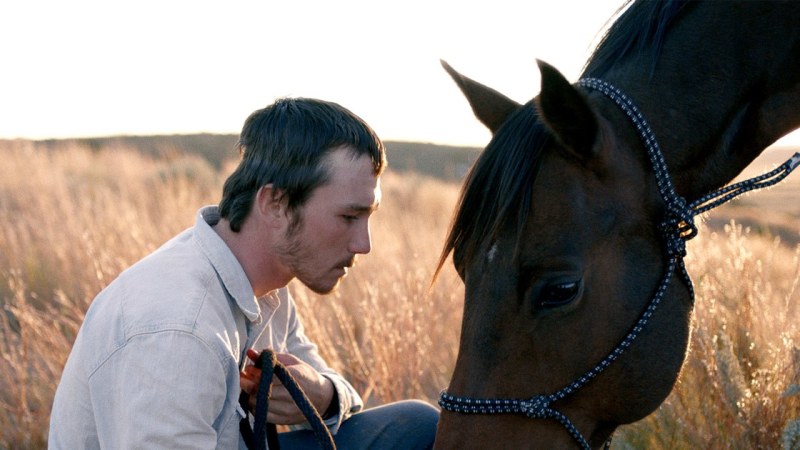Chloe Zhao’s “The Rider” is a film deserving of at least two viewings. I first saw “The Rider” back in September at the Telluride Film Festival and was immediately struck by the clarity with which Zhao directed her film. While “The Rider” is a story about cowboys and deals with themes of masculinity and violence, Zhao’s film explores the fraught relationship between one’s identity and one’s community. Based on star Brady Jandreau’s true story, “The Rider” follows the life of a Lakota cowboy and his family. He suffers a severe head injury in a rodeo accident and is forced to face life without the rodeo — life without the thing he loved most and felt born to do. The rawness of Brady’s story and the uncomfortableness of some of Zhao’s scenes makes “The Rider” simultaneously captivating and discomforting.
“The Rider” is not a film to watch casually. In the opening sequence, we watch as Brady digs staples out of his shaved head. Every person in the audience squirmed and gasped, the tension of the quiet moment on screen made audible in the reactions of its viewers. Zhao gives us no choice but to pay attention, to confront the parts of life that are hard to look at. The first time you watch the film you are forced to confront tough truths.
By fictionalizing a true story and casting non-actors to play the characters, Zhao pioneers the ways in which truth can be captured and conveyed on screen. Zhao’s choice to have real people play fictionalized versions of themselves gives her film a magnetism and authenticity that is hard to find in purely fictional or documentary movies. When she shoots in rehabilitation centers plagued by mirrors and stations a camera in front a paralyzed, shaking young man, we feel that she is capturing something brave and honoring the grit with which her characters live their lives out.
She showcases Brady’s strength of character even as we try not to flinch as blood spatters across the screen and we are forced to look closely as we watch his dreams slip out of reach. We wince along with him, and yet, we keep watching because each shot is so intentional, so perfectly composed, that our eyes are directed exactly to where they need to look.
Not only does Zhao capture the conflict within Brady’s own soul about his brain injury and his rodeo career, but also the spirit of the Lakota community, a community unified by faith, hardship and love for the land and animals they tend. Zhao’s choice to shoot in natural light where the sun is warm and soft helps to convey a sense of reverie and kindness in the Pine Ridge landscape and way of life.
It was the spirit of the South Dakota badlands that attracted Zhao to the region in the first place. She shot her first feature film, “Songs My Brothers Taught Me,” on the Pine Ridge Reservation, where she met Brady Jandreau for the first time. She immediately wanted to make a movie with him, but it wasn’t until his accident that she found the next story she wanted to tell.
While “The Rider” is a story is contained within its own space, its message radiates out and has the power to change the way we perceive America, masculinity, and success. When we think of Westerns or cowboys, we immediately think of a long cultural history of misconstrued, caricatured depictions of racism and toxic masculinity. Zhao tells a story without directly engaging with the politics on a broader scope. She lets the story stand for itself. The result is a film that is tender, authentic and refreshing.
While some might say “The Rider” captures the spirit of the American West, Zhao really paints a portrait of the soul. “The Rider” is intimately human and she captures not only the beauty of all it is to be human, but also the universality of suffering. It’s as if she captures truth itself, both the dark and the light, and in doing so, brings to the screen a story so moving, so authentic that you cannot help but let your jaw drop in awe at her masterpiece.
Nine months ago, I myself was a girl recovering from a brain injury and trying to cope with the loss of my athletic career. Brady’s story had hit close to home when I first watched “The Rider” last September in that tiny Telluride theater. I had wept as I watched him grapple with the loss of his rodeo dreams. But, when I saw “The Rider” for a second time, it hit me differently. I was less raw, and yet, Zhao’s film still made me cry. This time, I cried not because of the story, but because of its precision, because of its beauty. Zhao puts her camera so close to things thought to be so ugly, so cruel, and in lingering and noticing them, she makes even the broken, battered and dead look beautiful.
Contact Hayley Hodson at hhodson ‘at’ stanford.edu.
